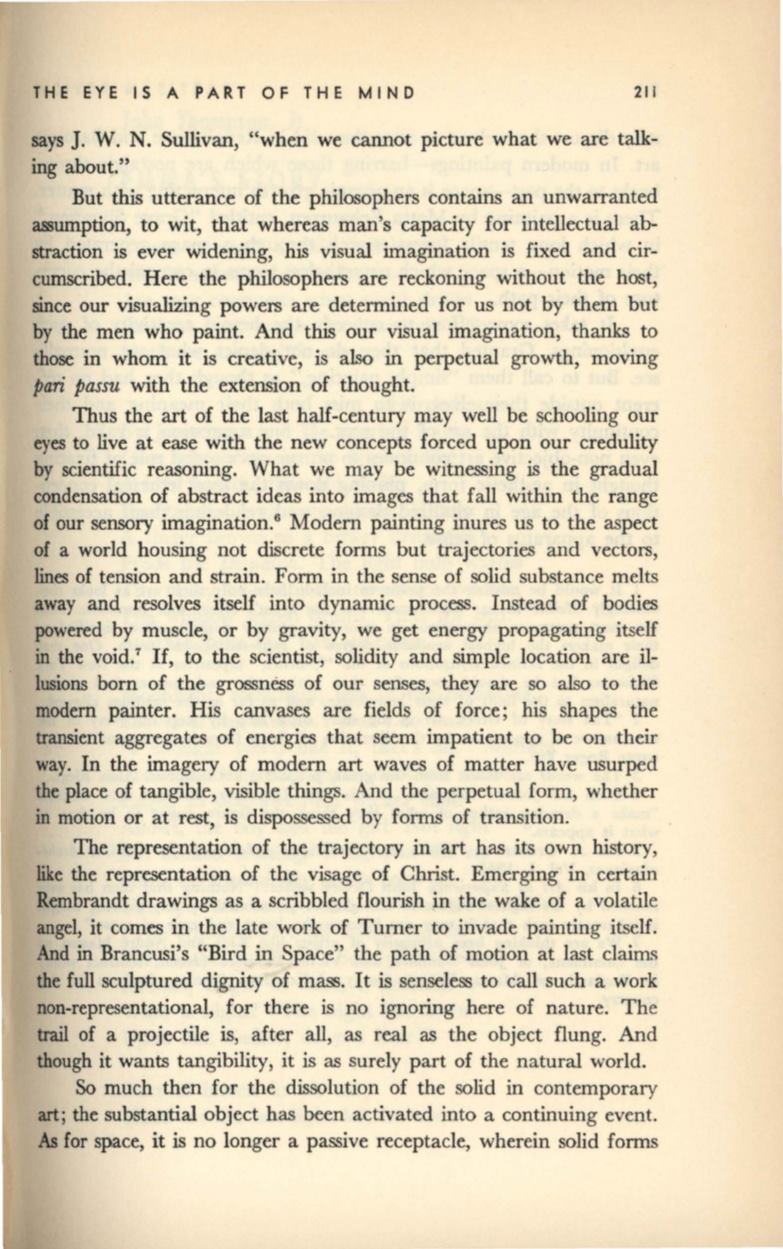
THE EYE IS A PART OF THE MIND
211
says
J.
W. N. Sullivan, "when we cannot picture what we are talk–
ing about."
But this utterance of the philosophers contains an unwarranted
aSlUmption, to wit, that whereas man's capacity for intellectual ab–
straction is ever widening, his visual imagination is fixed and cir–
cumscribed. Here the philosophers are reckoning without the host,
since our visualizing powers are determined for us not by them but
by the men who paint. And this our visual imagination, thanks to
those in whom it is creative, is also in perpetual growth, moving
pari passu
with the extension of thought.
Thus the art of the last half-century may well be schooling our
eyes
to live at ease with the new concepts forced upon our credulity
by scientific reasoning. What we may be witnessing is the gradual
condensation of abstract ideas into images that fall within the range
of our sensory imagination.
6
Modern painting inures us to the aspect
of a world housing not discrete forms but trajectories and vectors,
lines of tension and strain. Form in the sense of solid substance melts
away and resolves itself into dynamic process. Instead of bodies
powered by muscle, or by gravity, we get energy propagating itself
in
the void.
7
If,
to the scientist, solidity and simple location are il–
lusions born of the grossness of our senses, they are so also to the
modem painter. His canvases are fields of force; his shapes the
transient aggregates of energies that seem impatient to be on their
way. In the imagery of modern
art
waves of matter have usurped
the place of tangible, visible things. And the perpetual form, whether
in
motion or at rest, is dispossessed by forms of transition.
The representation of the trajectory in art has its own history,
like the representation of the visage of Christ. Emerging in certain
Rembrandt drawings as a scribbled flourish in the wake of a volatile
angel, it comes in the late work of Turner to invade painting itself.
And
in
Brancusi's "Bird in Space" the path of motion at last claims
the full sculptured dignity of
m~.
It is senseless to call such a work
non-representational, for there is no ignoring here of nature. The
trail
of a projectile is, after all, as real as the object flung. And
though it wants tangibility,
it
is as surely part of the natural world.
So
much then for the dissolution of the solid in contemporary
art;
the substantial object has been activated into a continuing event.
As
for space, it is no longer a passive receptacle, wherein solid forms


